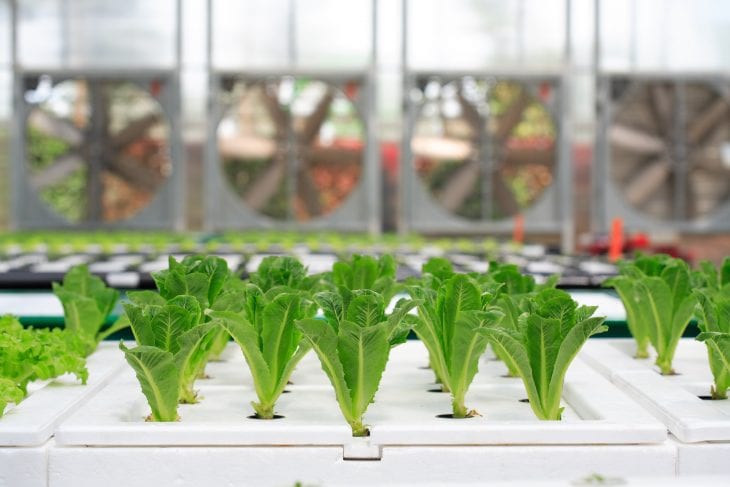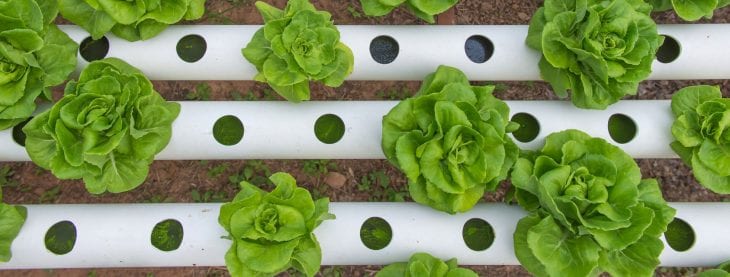A brief look into the history of hydroponics shows that it isn’t an entirely new concept. While the term may have been first used in the 20th century, the concept of growing plants in water (that’s what the hydro stands for) stretches back to the 17th century at least. So while the method of cultivating plants without the aid of soil is not recent, the technology to improve it certainly is.
Advantages of Growing Plants Hydroponically
Hydroponics, as its name suggests, relies on water. That liquid will be infused with all the needed nutrients that a plant needs to grow. This is an effective way of growing for a number of reasons, including:

Img source: israelagri.com
- The ability to grow plants indoors. Those who are interested in growing their own food but live in spaces that provide constraints to such wants can look at hydroponics as a way to do exactly that.
- The chance to grow food all-year-round. In certain places, the sun comes out to play for a certain amount of time then goes into hiding. Plants need sunshine in order to survive and hydroponic farming can provide the answer. Cultivation through hydroponic means involves the use of light – lots of them – to aid growth.
- The opportunity to grow food faster. Plants grown hydroponically isn’t dependent on whether or not the sun is out or water is given to them. They are supplied with the right amount of light they need and their “water intake” is also closely monitored.
Hydroponics, then, is a method that can be taken advantage by not just apartment dwellers but many sectors as well. It even had its use during the Second World War when the method was put to use to feed soldiers. Even today, many other fields are taking advantage of what hydroponics can provide: a steady supply of food.
NASA, for instance, has a plan to send humans to Mars. That journey alone takes years – a little over two years to be exact. Providing that much food for the intended amount of time can take up a lot of weight. So scientists are looking for a way for astronauts to grow food and the method they are looking into is hydroponics. So far, attempts to grow plants aboard the International Space Station have been successful; the first experiment involved growing red romaine lettuce.

Img source: AgFunderNews.com
While some domestic growers have taken advantage of the plant-growing method, it is making an impact in commercial food production. The world’s population is constantly growing and means need to be found to feed a large population.
Many are looking towards hydroponics and indeed some commercial growers are already using the method. To cater to their needs, there are companies like Agron which provide a large inventory of products and tools that make hydroponic cultivation a more efficient process. More demand will definitely mean looking for ways to improve the process, and that isn’t the sole responsibility of agricultural companies; technology has to come into the picture as well.
Technological Advances in Hydroponics
Improvements in technology will only make hydroponic farming better. There have been many innovations over the years that have helped enhance the process.
- Lighting. Light is one of the major components of a hydroponic system. It’s the one that encourages plants to grow faster and therefore food in a shorter amount of time. There have been improvements in high-intensity discharge (HID) lighting systems and even LED lighting systems (thanks to its ability to be tailored to a specific light spectrum).

Img source: acesandiego.com
- Nutrients. It’s this and water that comprise the basics of hydroponics. Just like regular farming, improvements to nutrients can also improve the health and growth of plants. More novices are beginning to take to the idea of hydroponic farming and they need solutions that aren’t complicated. One such answer is self-buffering nutrients that adjust to the needed pH range. Other improvements include nutrients that are time-released and fully soluble and can maintain ppm and pH levels on a more consistent basis.
- Hydroponic systems (nutrient delivery systems). Vertical growing has become quite popular over the years, with people wanting to grow plants in constricted spaces. As such, this has seen the development of systems that can be built onto the side of buildings. Other improvements include the creation of hybrid systems that combine functions of different hydroponic systems. Also, an improvement in this area is specialized systems that, for instance, send more oxygen to the roots of plants.
Hydroponics is one way of producing more food in less amount of time. With a growing population, methods need to be found to make more food in a short time. Hydroponics seems to have the answer and technological improvements will only help it become more efficient at what it already does.
